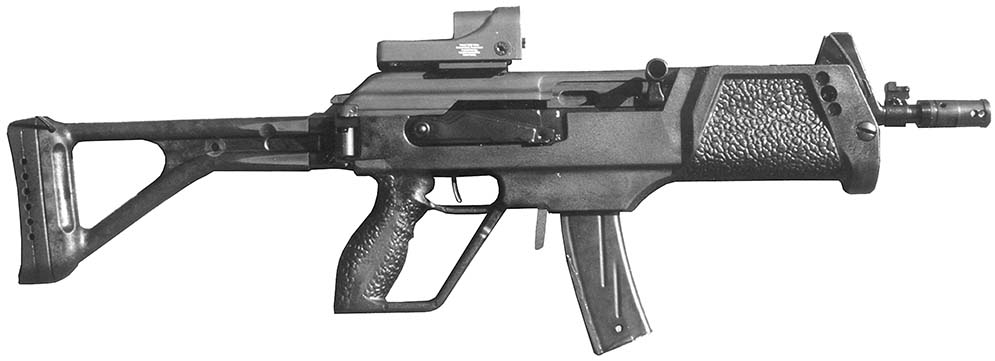By Jani Kotnik
The base for the new carbine was the micro version of the Galil assault rifle. The Galil family of infantry assault rifles is well known around the world. LIW or Vektor also produces the Galil rifles in South Africa. Before adopting Galil as an infantry rifle for the IDF (Israel Defense Forces) FN FAL, produced by IMI, has been the basic rifle of the IDF. Performance of the FAL did not satisfy Israeli military officers during the Six-Day War in 1967. IMI FAL rifles with heavy barrels were prone to constant jams, caused by the desert sands. After the war the IDF tested M16s, the Stoner 63, Heckler& Koch HK 33 and the domestic design produced by the Lt. Col. Uziel Gal, the designer of the Uzi submachine gun. All of these weapons fired the 5,56 x 45 cartridge.
The standard weapon against which the above rifles were tested was the AK47. The AK 47 performed almost flawlessly in the hands of the Arabs, and it was that performance that the IDF wish to equal or surpass. Tests that were performed were among the most stringent ever conducted for small arms. In an effort to duplicate the rigors of desert warfare, the battle hardened Golani Brigade did everything they could to “destroy” the weapon given them. In nearly every case they succeeded. IDF authorities decided that the best weapon for their purposes was the AK 47.
The friend of mine, a war veteran from the Six Day War told me a story, how they rejected the M14 rifles sent during the war by US ally, in favor of the AK 47, which they can get in large quantities from their adversaries.
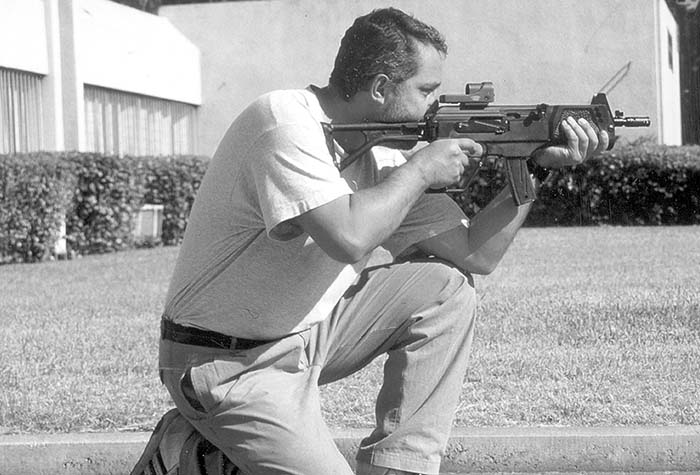
To satisfy the request for the AK type of weapon, designer Israeli Galili worked on the 5,56 mm version of the Kalashnikov rifle using a barrel, bolt face parts and magazines from the Stoner 63 system. The resulting weapon showed excellent promise. Meanwhile IMI personnel learned that the Finland company SAKO produced a copy of the AK 47 called the M62. After modifying samples of the M62, IMI Small arms division, which was at that time under direction of Mr. Yaacov Lior, purchased unmarked Valmet M62 receivers and mated them with the 5.56 mm barrels. In addition to the modifications of the Valmet, the Stoner magazines were modified and added to the new rifle. The folding stock was a FN FAL derivation. The results were an Israeli AK version in the standard NATO caliber 5.56 mm. The “new” Israeli rifle, the Galil, was first issued to the troops in May of 1973.
The Galil family of assault rifles consist of the standard model ARM, (with bipod), the AR, SAR and MAR (Micro) scale down versions of the 5.56 mm standard Galil rifle. All models (except MAR) are also available in the 7.62 x 51 caliber. The special Sniper rifle was developed from an ARM 7.62 mm model. The Magal carbine was developed from the smallest of the Galil family, the MAR Micro Galil rifle, and the caliber was changed from 5.56 mm to .30 carbine.
MAGAL
The MAGAL carbine is a semi-automatic weapon in caliber .30 carbine. The ammunition of the new rifle the, .30 carbine, is a normal choice for the Israeli police because they have large quantities of the M1 Carbines in their inventory. The major modifications made on the MAR micro Galil rifles were changing the barrel, bolt and magazine. But that was not enough; they had to change the gas system too. The 5.56 x 45 mm ammunition produces higher-pressure then the .30 carbine ammo. The gas chamber hole had to be a little larger then the original one and in addition to that, the bolt carrier was also changed.
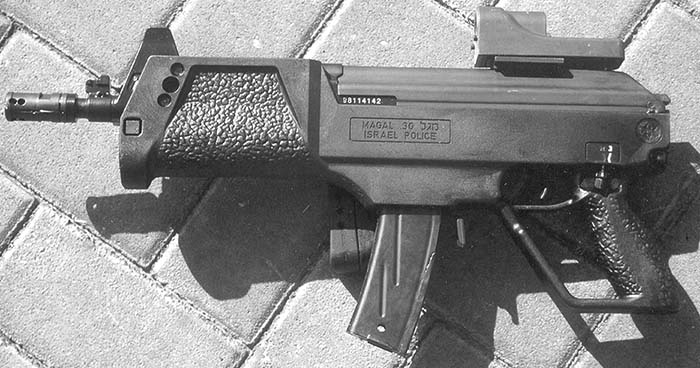
The bolt carrier of the Magal carbine is similar to a bolt carrier of the standard Galil rifle, except that the bolt carrier does not incorporate a gas piston in the bolt carrier assembly. The gases from the gas chamber directly hit the extension of the bolt carrier, which acts as a gas piston. It is hard chrome plated on the top, to ease the cleaning procedures.
In the Magal we can use M1 carbine magazines, but normally a 27 round magazine, produced for the new carbine feeds it. The new magazines are different from the magazines for the M1 carbines in the modified follower, which incorporates the bolt hold open device, to hold the bolt to the rear after the last round was fired. (The M1 Carbine has no automatic hold open device.)
The Jacket
The mechanical constructions of the MAGAL carbine, as a Galil derivation, were not altered in a major direction. The main designing change was put into an external outline of the new carbine. The front grip, which protects the shooter hand from heat produced by the gas system and hot barrel, is made from plastic material and is connected with a pistol grip. In the manufacturer’s operating manual, this part is described as a jacket, and it is in fact the plastic cover for the whole receiver. The jacket additionally protects the receiver and most of the barrel from atmospheric influence and hard treatment. An additional hand guard on the pistol grip is another feature that indicates that the MAGAL is to be used as a police weapon. Police sometimes use lethal weapons such as rifles or pistols for non-lethal purposes, such as trucheons, to hit the participants of demonstrations.
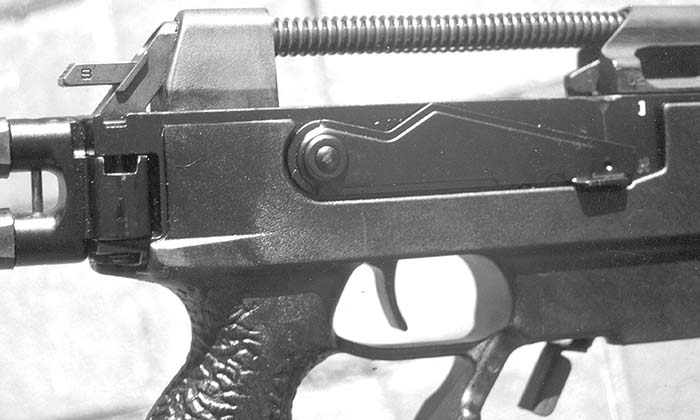
On the front side of the jacket below the barrel is an orifice for the flashlight. The flashlights are now standard equipment for the police to use in combination with firearms such as submachine guns, carbine or assault rifles. The flashlights are not suitable for military use because usually the opposing forces are likely to shoot at you when you expose your position with a flashlight.
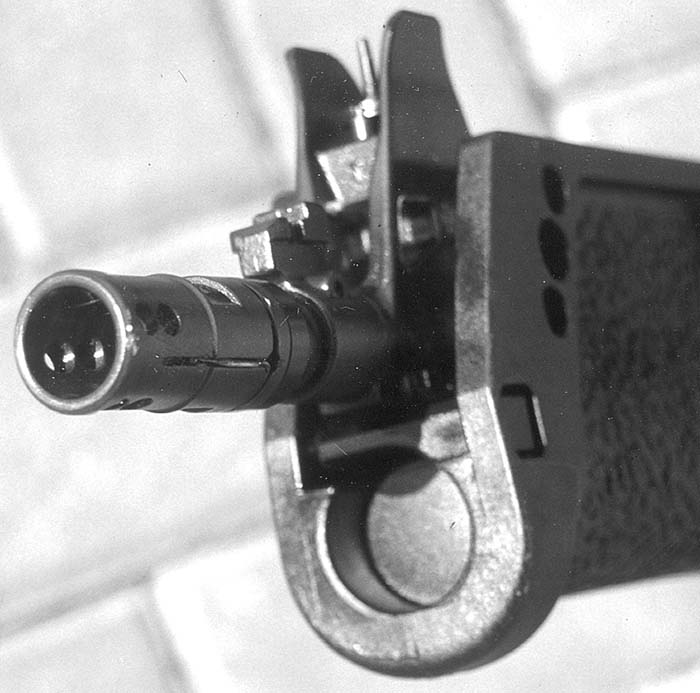
In addition to the use of a flashlight as a standard accessory of the MAGAL, the carbine can be equipped with the grenade launcher M203, which can be mounted on a Magal after disassembling the jacket. Rubber bullets can be used with the canister, which can be mounted on the flash suppressor.
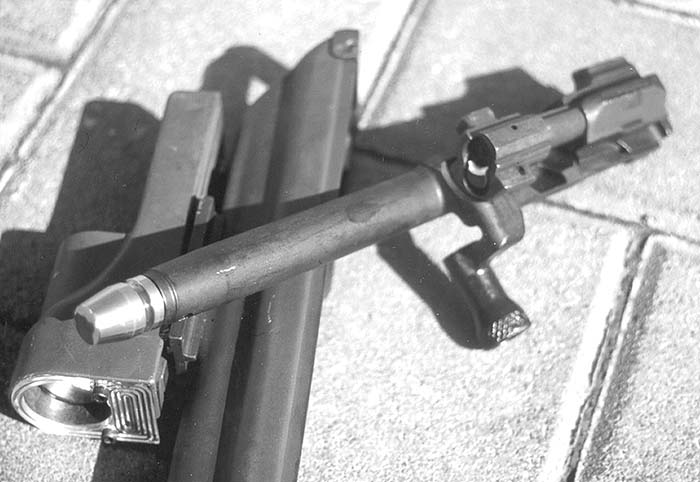
The Sights
The iron open sights used on Magal are a standard Galil type of sight and include the night sights (beta lights). The rear sights are orange and the front are green colluded. The rear adjustable sights are “L” flip-type sights and the small opening is used for distances of up to 150 meters. The more sophisticated collimator sights (red dot) are now the first choice of the police personnel for sights on tactical weapons. The Trijicon or Mepro types of collimators sights are mounted on the adapter on the receiver cover. More demanding customers can get the Magal equipped with “Eyal” sniper scope (4-x magnification).
All kinds of rear sights are attached to the receiver cover and that can be a problem for accuracy with a worn down weapon. The cover can be loosely fitted to a receiver, which can affect the accuracy of the rifle.
To dismantle the Magal follow this procedure: First, unload the weapon and examine the chamber. Push the cover catch forward, lift the receiver cover and detach it from the receiver. Push the recoil spring assembly forward and lift it from the receiver. Pull the bolt carrier to the utmost rear point and lift it from the receiver, push the bolt to the rear and turn it clockwise, then push it forward. To strip the gas cylinder just pull it backwards.
The recoil spring assembly on the Magal consists of an additional triangular rubber recoil buffer. Those kinds of buffers stop the wear on the bolt and bolt carrier from metal on metal pounding every time you fire. Felt recoil is also reduced because the buffer absorbs the recoil normally absorbed by the shooter’s shoulder.
On the range
I am sorry I cannot give you a shooting impression of the Magal, because IMI personnel were not able to allow me on the shooting range at the time I was in the factory. Maybe next time I’ll have more luck with IMI. Of all the Galil rifles, the Magal is very handy to operate with a full loaded carbine weight of 3,68 kg. With a low powered cartridge, the shooting should be more than comfortable. The original M1 carbine (2,5 kg) is very easy to shoot so the much heavier Magal should be in the same category.
Israeli police use standard full metal jacket military .30 carbine ammunition and IMI SP (soft point) cartridges. The muzzle velocity of the 110-grain (7,10 gram) soft point bullet fired from 50-cm barrel is 600 meters per second. With the 1278 joules of energy the bullet of the SP .30 carbine proved to have excellent stopping power. The new SP ammo was developed to meet the requirements of the Israeli Police. It can accurately engage targets up to a distance of 50 meters. It is ideally suited for use in crowded environments, where secondary casualties must be prevented.
Review
The Magal semi automatic carbine is a “police” carbine, with potential on the civilian market as a recreation or home defense weapon. In my opinion, IMI has made a big marketing mistake to classify the Magal as a police weapon, because in many states so called police or military weapons are prohibited for civilian customers. On the other hand the specialized police markets are already full of very good products in this area. The H&K MP5 submachine guns are a main player.
| This article first appeared in Small Arms Review V4N6 (March 2001) |



